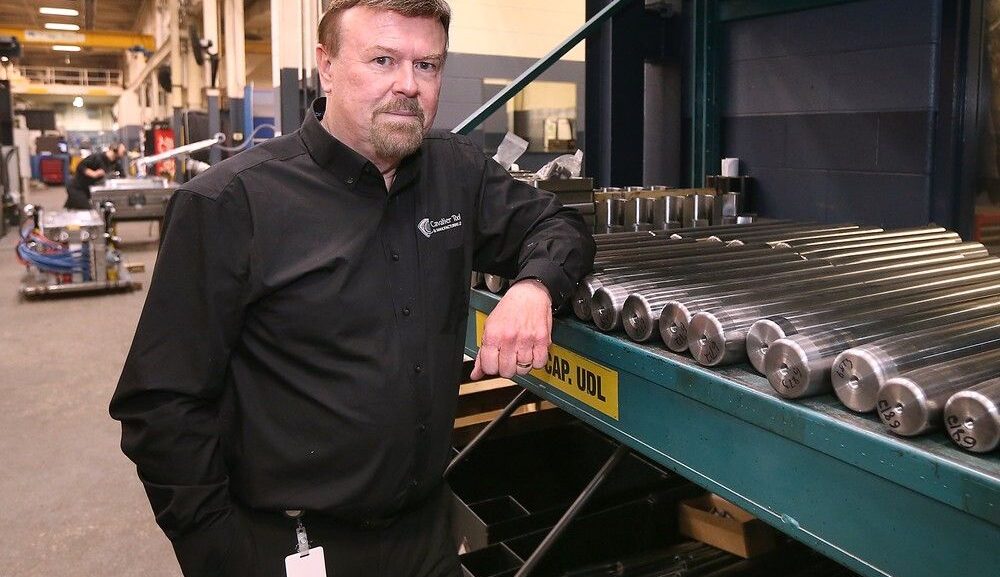Published Mar 07, 2025 • 3 minute read
Auto industry analysts say it would take automakers years of sustained spending and construction that would cost tens of billions of dollars to replicate the production capacity needed to supply North America in addition to entirely rebuilding their supply chains.
“The USMCA was designed to function as one machine,” said Sam Fiorani, AutoForecast Solutions vice president of global vehicle forecasting.
THIS CONTENT IS RESERVED FOR SUBSCRIBERS ONLY
Subscribe now to read the latest news in your city and across Canada.
- Unlimited online access to articles from across Canada with one account.
- Get exclusive access to the Windsor Star ePaper, an electronic replica of the print edition that you can share, download and comment on.
- Enjoy insights and behind-the-scenes analysis from our award-winning journalists.
- Support local journalists and the next generation of journalists.
- Daily puzzles including the New York Times Crossword.
SUBSCRIBE TO UNLOCK MORE ARTICLES
Subscribe now to read the latest news in your city and across Canada.
- Unlimited online access to articles from across Canada with one account.
- Get exclusive access to the Windsor Star ePaper, an electronic replica of the print edition that you can share, download and comment on.
- Enjoy insights and behind-the-scenes analysis from our award-winning journalists.
- Support local journalists and the next generation of journalists.
- Daily puzzles including the New York Times Crossword.
REGISTER / SIGN IN TO UNLOCK MORE ARTICLES
Create an account or sign in to continue with your reading experience.
- Access articles from across Canada with one account.
- Share your thoughts and join the conversation in the comments.
- Enjoy additional articles per month.
- Get email updates from your favourite authors.
THIS ARTICLE IS FREE TO READ REGISTER TO UNLOCK.
Create an account or sign in to continue with your reading experience.
- Access articles from across Canada with one account
- Share your thoughts and join the conversation in the comments
- Enjoy additional articles per month
- Get email updates from your favourite authors
Sign In or Create an Account
or
Article content
“The U.S. can’t compete with the European Union and it definitely can’t compete with China on its own. It takes all three countries to compete with the EU and take on China.”
Fiorani said the herculean effort and the enormous piles of cash it would require to replicate what already exists in Canada and Mexico would take long past the end of President Donald Trump’s term limit.
He said an investment in a new plant takes three or four years from start to finish and it takes even longer to build a reliable supply chain.
“It would take three to five years of dedicated application to move any specific number of vehicles around North America,” Fiorani said.
“By then the landscape could change. This industry doesn’t and can’t move quickly.
“Look how long it took for Honda to set up in North America in the 1980s. Once there was an agreement to build something, it took nearly another decade to relocate production here to keep their volumes adequate.”
Fiorani added though the automakers are multibillion-dollar operations, they don’t have billions lying around to spend on constructing another half dozen production plants to replace existing capacity.
Article content
He said it’s more likely automakers will shift some production to existing plants in the U.S. when they can, such as Honda will do in moving production of the next generation Civic from Mexico to Indiana, rather than build new facilities.
Trillium Network for Advanced Manufacturing managing director Brendan Sweeney said there’s a real risk for U.S. automakers in pushing Canada and Mexico to the sidelines.
“The EU, they got enough cars for their market,” Sweeney said. “You can’t drive a F-150 truck on those narrow European streets. They can survive without the U.S.
“At some point in time, you also have to deal with China. If the U.S. is pushing its main friends and allies away, there’s one less argument for not doing business with China.
“China is now making more cars and batteries and doing more innovation than the U.S.”
What would be even more challenging for the automakers to create is an entirely American supply chain.
When it comes to tooling and mould making, Canada is home to many of North America’s largest companies in those fields. Several of those top 10 players are located in the Windsor area.
Article content
“Canada has about 40 per cent of North America’s largest tool and mould makers,” said Peter Gossmann, Windsor-based Cavalier Tool and Manufacturing sales manager.
“The U.S. doesn’t have the capacity to replace that. They’ll have to go to China.”
Gossmann said Canada provides about 20 per cent of the parts used in the U.S. auto industry. He noted in building a U.S. supply chain to replace that, the Americans face a bigger hurdle in staffing those plants.
“The U.S. industry doesn’t have enough people educated to replace that capacity,” Gossmann said.
“It’s taken us decades to develop the skills and knowledge that we have to understand how to use the machines, design and develop the products.
“Our U.S. customers are telling us they’ve run out of skilled people. If their intention is to build their industry, that’s not happening quickly and while they try to do that they’re going to go through a lot of pain.”
Cavalier ships 90 per cent of its products to the U.S.
Gossmann said their American-based customers could already find low-cost countries to make things rather than in Canada.
“We don’t sell products for the lowest price,” Gossmann said. “We have the highest quality products and we get paid for that.”
Dwaddell@postmedia.com
Twitter.com/winstarwaddell
Article content

